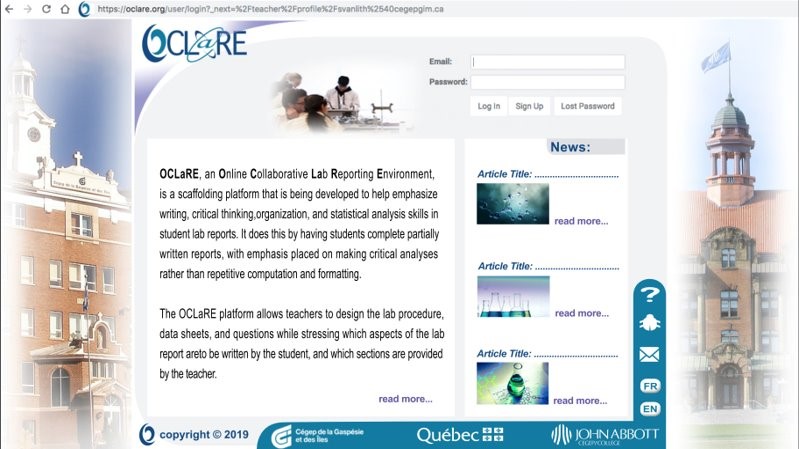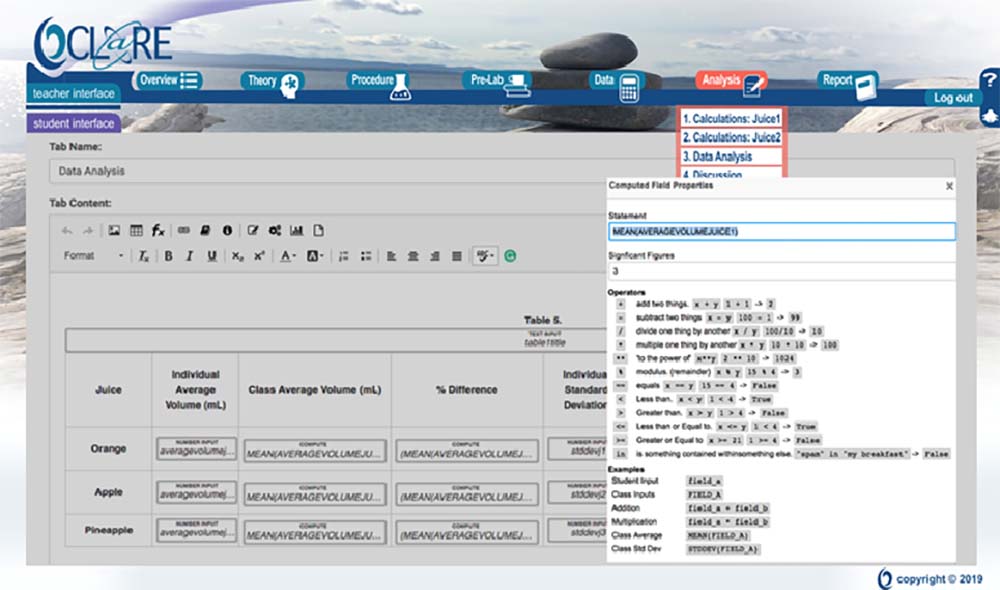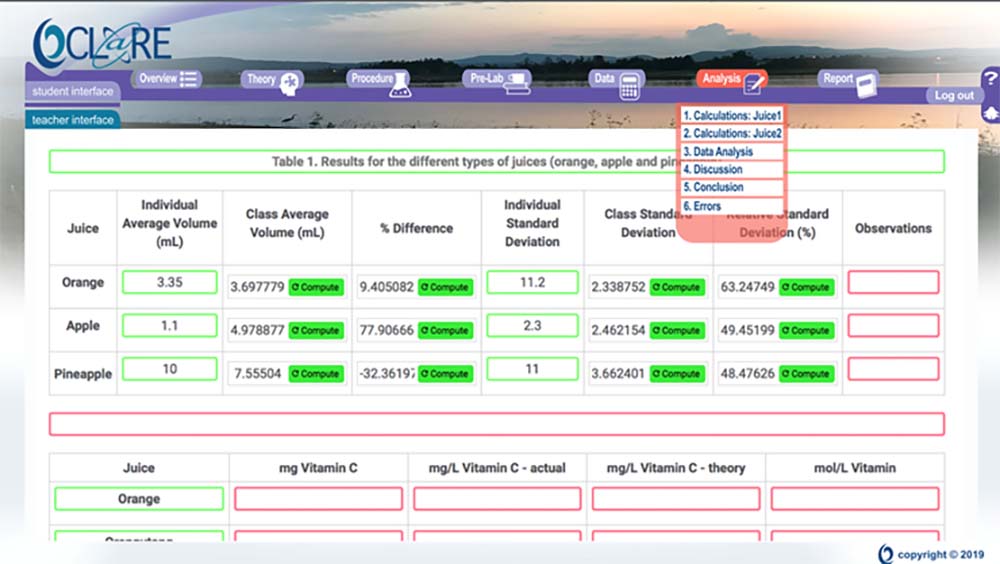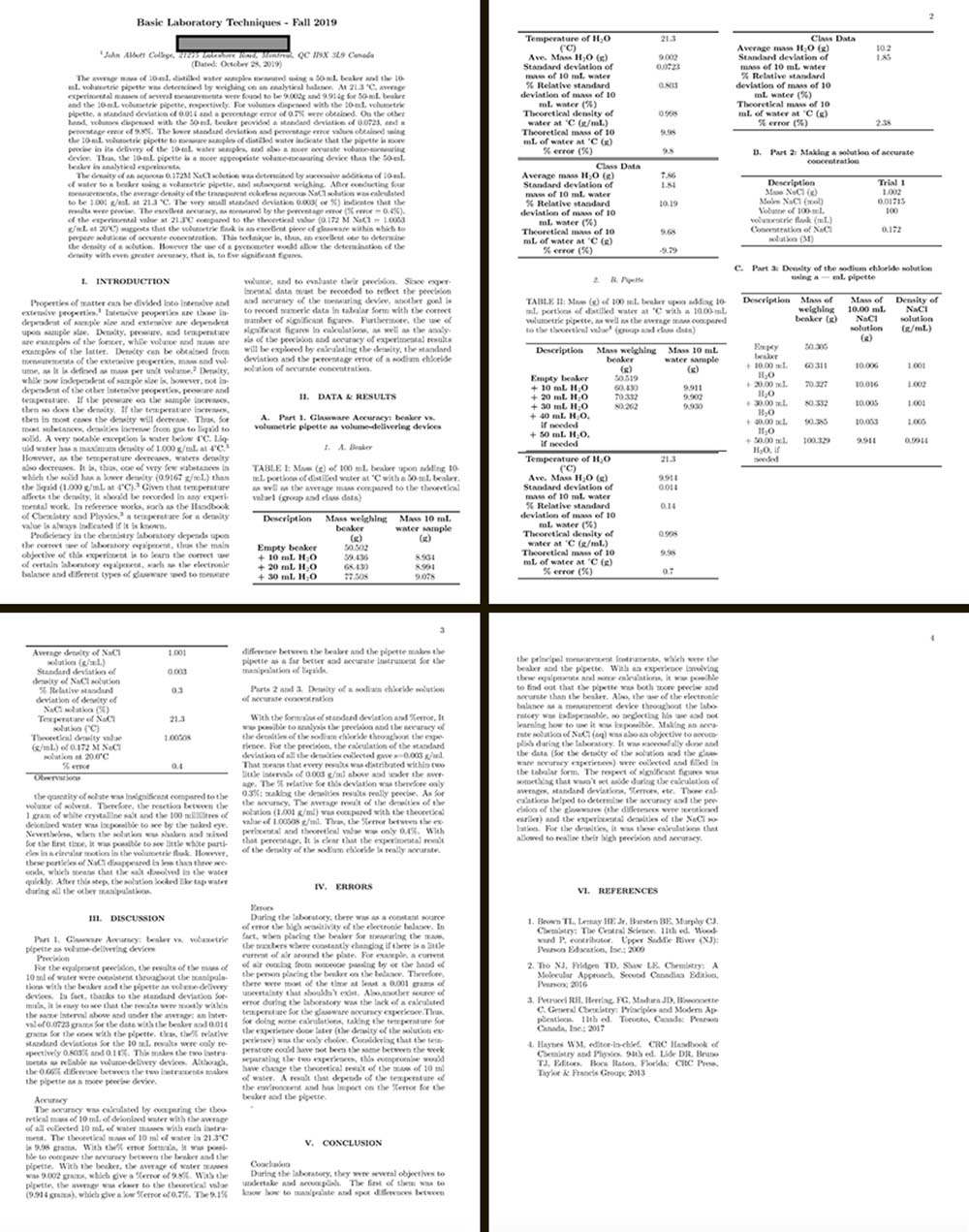OCLaRE, an Online Collaborative Lab Reporting Environment

Modern paradigms of educational research take the view that learning science, rather than being a process of learning new facts, is instead a process of adopting the norms, practices and warrants of scientific culture. A group of teachers from Cégep de la Gaspésie et des îles (GIM) and John Abbott College (JAC) are developing an online scaffolding platform, called OCLaRE, that emphasizes scientific writing, critical thinking, organization and statistical analysis skills in student laboratory reports that will be useful to science students across disciplines.
Petra Turkewitsch (Chemistry-GIM), Michael Dugdale (Physics-JAC) and Murray Bronet (Chemistry-JAC) worked with a web programmer, graphic designer, and interns from Computer Science and Graphic Design programs (JAC) to develop the Online Collaborative Lab Reporting Environment (OCLaRE) utility. This project has been spearheaded by GIM with financial assistance from the Entente-Canada Québec beginning in 2016.
A screen capture showing the OCLaRE landing page
OCLaRE is a web-based application that enhances the production of a lab report by offering tools for gathering information, planning, analyzing and writing collaborative lab reports. Teachers may customize a lab report by specifying the sections to be included in the report, the type of data to be entered, how the data may be analyzed, identifying the sections of the report that the students are to complete.
In this way, OCLaRE helps and guides students in the production of reports that better incorporate the norms of the scientific and engineering communities, while emphasizing the making of critical judgements. This interpretive nature can be expressed in discussion, error, data analysis, and conclusion sections where students can learn to write in the third person, passive voice that is standard in professional report writing. OCLaRE allows teachers to specify fields that students can complete and has the possibility of conducting mathematical operations on stored data.
Students using OCLaRE can interact with partially-completed example reports, and while using teacher-defined tools and guidelines that use critical thinking, judgment and reflection, students can produce a complete, comprehensive, and well-formatted report.
Since teachers can hand-pick which components of the written report to emphasize, students can learn in a stepwise or modular fashion, while gradually gaining the expertise and insight into the creation of a complete report. The ultimate goal of this scaffolding technique is to have students completing all components of a formal laboratory report by the end of term.
Screen captures showing various editing (teacher) and input (student) views in the OCLaRE platform
Underlying technologies
Professional-looking reports, in the style of journal publications, are generated using a LaTeX typesetting system, and are based on a teacher-created template. The OCLaRE platform also uses the LaTeX equation editor to enable the representation of complex mathematical or physics equations, in addition to chemical reactions.
The template does not require any coding or programming ability; all functions are selected with a graphical user interface (GUI), similar to that of Microsoft or Google interfaces. All data entered by the student is automatically stored in a database, including any uploaded images, written text, or numerical input. As such, this data can be recalled from any web-based browser and can be further manipulated mathematically and/or statistically.
OCLaRE labs can also be accessed directly through the Learning Tools Interoperability (LTI) standard by learning management systems such as Moodle or EdX.
A sample laboratory report produced by OCLaRE
OCLaRE has full integration with the open source R statistical package including ggplot2 for generating professional-quality graphs. Moreover, this R back-end utility allows labs to be pre-programmed to perform computations of arbitrary complexity, opening the door to lab designs incorporating more interesting and rigorous statistical tests. For example, one could easily perform an error analysis of experimental data, plot error bars on a graph or perform a t-test to determine significance between groups of data and/or data outlier validity.
OCLaRE also helps in the evaluation of the performance criteria specified within the scientific program. For example, OCLaRE is able to facilitate the evaluation of experimental results, and the achievement of the competency which requires using available technological tools.
OCLaRE in college teaching
OCLaRE is gradually being implemented in Chemistry and Physics courses at GIM and JAC. Two other English colleges are currently piloting the utility. Already, OCLaRE has been used by six different teachers, seven different courses, and three different institutions. Fourteen different laboratory experiments have already been designed with more experiments added each semester.
OCLaRE also helps students manage their resources and encourages their education by engaging students in more authentic tasks. For example, if the purpose of the lab is to understand the relationship between certain dependent and independent variables, OCLaRE can plot the data automatically. The task of “learning” a graph plotting program, external to the objectives of the lab, is removed by OCLaRE, thereby allowing the student to focus on more specific goals and laboratory objectives. We believe that this directed focus will help to encourage deep learning, and sharpen critical thinking. This, in turn, should help to ensure that students are better prepared to achieve the overarching goals of the science program.
The OCLaRE utility also allows for the collaboration of student teams so that individual students can independently contribute to a joint report. Each student’s name would automatically appear in the group reports.
Student reaction to OCLaRE
Students surveyed reported that they appreciate the opportunity to enter the data digitally (with automatic saving), enjoy using the OCLaRE utility. They also believe that they retained the course content better, and felt it was an efficient way of recording and accessing data and information. Nonetheless, they also felt that they spent more time completing this online report than they would have spent doing a more “traditional” lab. This is probably true as students are now expected to complete discussion, error analysis, and conclusion sections that require more reflective thought than the fill-in-the-blank type of report that was normally required. Students especially liked the printed LaTeX output and were proud of the work that they produced.
Future development of OCLaRE
The interdisciplinary community that has emerged from this project encourages the exchange of ideas that allows the application of new and interesting pedagogical theories. Teachers are using their professional experience and inviting the student to refine their appreciation of the scientific process. The partnership has been beneficial to both GIM and JAC, two colleges that have very different demographic contexts.
The development team is now working on a Natural Language Processing (NLP) tool to automatically compare the student’s novice writing style, syntax, and grammar to that of an “expert” composition. The OCLaRE utility will return suggestions to the student to improve his or her written submission. In addition to this automated and immediate feedback, an interdisciplinary team of science and English teachers will also evaluate, not only the content of the report, but the writing and composition of the submitted work.
We are excited about this phase of the project and look forward to reporting on its implementation in 2020!






